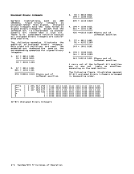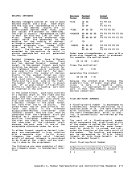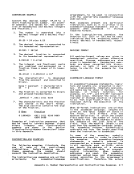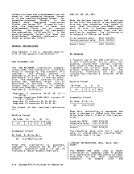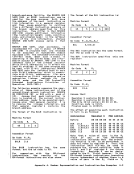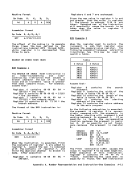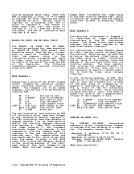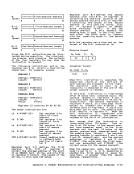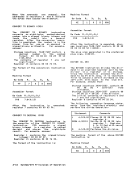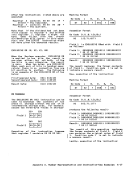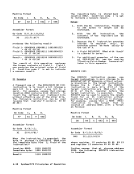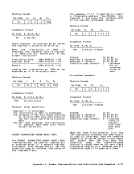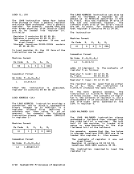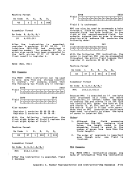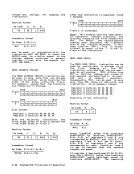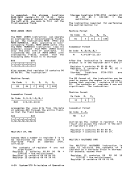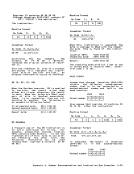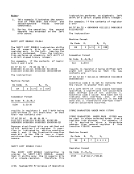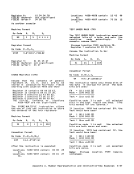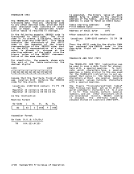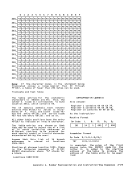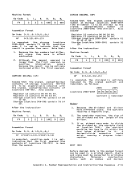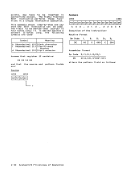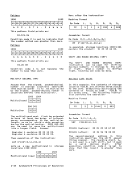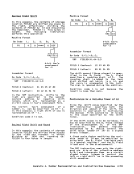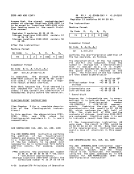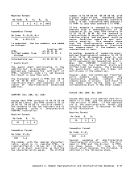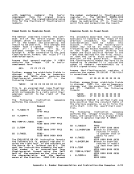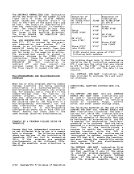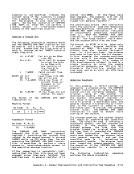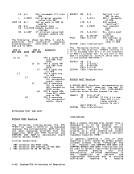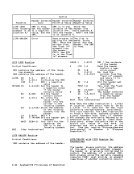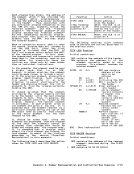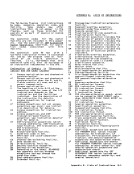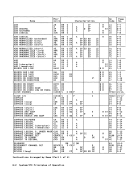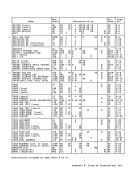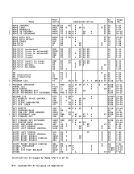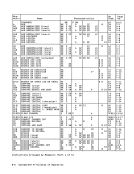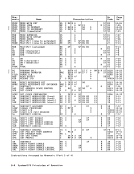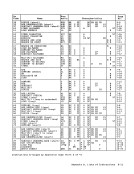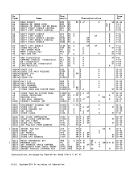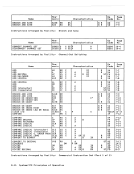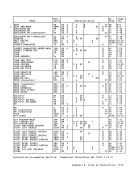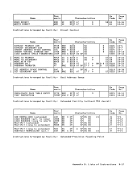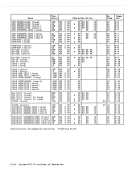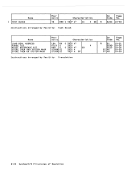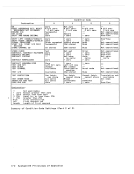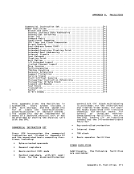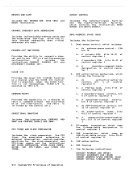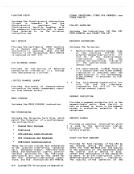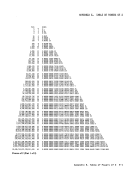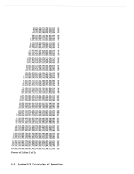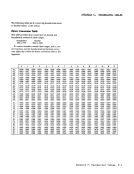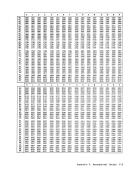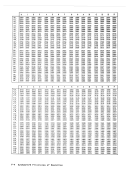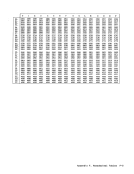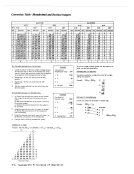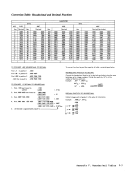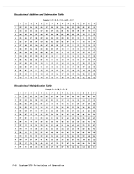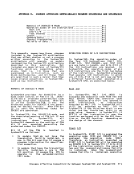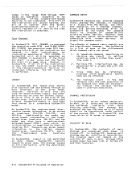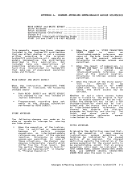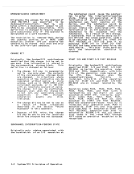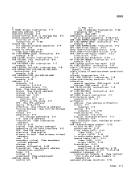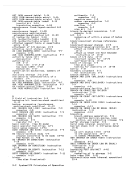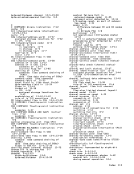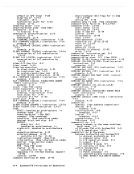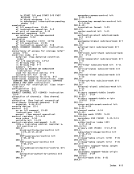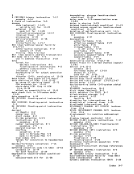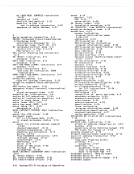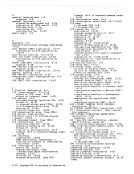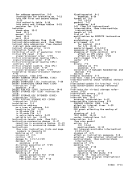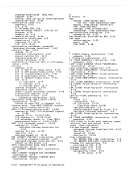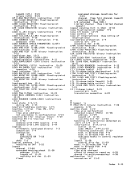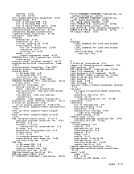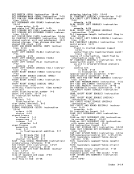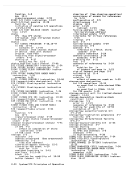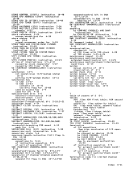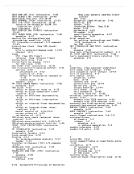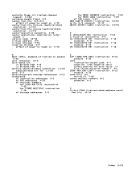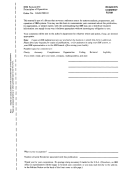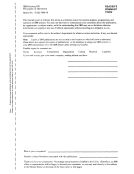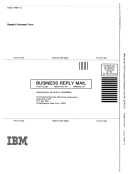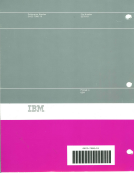Programming Notes
1• Examples of the use of the COMPARE LOGICAL instruction are given in
Appendix A.
2.COMPARE LOGICAL treats all bits of
each operand alike as part ofa field of unstructured logical data.
ForCOMPARE LOGICAL (CLC), the
comparison may extend to field
lengths of 256 bytes.COMPARE LOGICAL CHARACTERS UNDER MASK
o 8 12 1620 31
The first operand is compared with the
second operand under control ofa mask,
and the result is indicated in the
condition code.
The contents of the M3 field are used as
a mask. These four bits, left to right,
correspond one for one with the four
bytes, left to right, of general regis
terR t • The byte positions correspond
ing to ones in the mask are considered
asa contiguous field and are compared
with the second operand. The second
operand isa contiguous field in storage, starting at the second-operand
address and equal in length to the
number of onesin the mask. The bytes in the general register corresponding to
zeros in the mask do not participatein the operation.
The comparison proceeds left to right,
byte by byte, and ends as soon as aninequality is found or the end of the
fieldsis reached.
When the maskis not zero, exceptions
associated with storage-operand access
are recognized for no more than the
number of bytes specified by the mask.
Access exceptions mayor may not be
recognized for the portion ofa storage
operand to the right of the first
unequal byte. When the mask is zero,
access exceptions are recognized for one
byte at the second-operand address.
Resulting Condition Code:
o
1
2
3Operands equal, or mask bits
all zeros
First operand low
First operand high
Program Exceptions:
Access (fetch, operand 2)
Programming Note
An example of the use of theLOGICAL CHARACTERS UNDER MASK
tionis given in Appendix A. COMPARE LOGICAL LONG CLCL [RR] 'OF' o 8 12 15 COMPARE instruc-
The first operand is compared with the
second operand, and the result is indi
cated in the condition code. The short
er operandis considered to be extended
on the rightwith padding bytes.
The Rt andR2 fields each
even-oddpair of general
must designate an
register; otherwise, a
exception is recognized.
designate an
registers and
even-numbered
specification
The location of the leftmost byte of the
first operand and second operand is
designated bybits 8-31 of general
registers Rt and R
2
, respectively. The
number of bytes in the first-operand and
second-operand locations is specified by
bits 8-31 of general registers Rt + 1
andR2 + 1, respectively. Bit positions 0-7 of general register R2 + 1 contain
the padding byte. The contents of bit
positions0-7 of general registers Rt,
R21 and Rt + 1 are ignored.
The contents of the registers just
described are as follows:
R t1////////1 First-Operand Address
o 8 31\////////1 First-Operand Length
o 8 31
//////////Second-Operand Address/
o 8 31
PadSecond-Operand Length
o 8 31
Chapter 7. General Instructions 7-15
1
Appendix A.
2.
each operand alike as part of
For
comparison may extend to field
lengths of 256 bytes.
o 8 12 16
The first operand is compared with the
second operand under control of
and the result is indicated in the
condition code.
The contents of the M3 field are used as
a mask. These four bits, left to right,
correspond one for one with the four
bytes, left to right, of general regis
ter
ing to ones in the mask are considered
as
with the second operand. The second
operand is
address and equal in length to the
number of ones
zeros in the mask do not participate
The comparison proceeds left to right,
byte by byte, and ends as soon as an
fields
When the mask
associated with storage-operand access
are recognized for no more than the
number of bytes specified by the mask.
Access exceptions mayor may not be
recognized for the portion of
operand to the right of the first
unequal byte. When the mask is zero,
access exceptions are recognized for one
byte at the second-operand address.
Resulting Condition Code:
o
1
2
3
all zeros
First operand low
First operand high
Program Exceptions:
Access (fetch, operand 2)
Programming Note
An example of the use of the
tion
The first operand is compared with the
second operand, and the result is indi
cated in the condition code. The short
er operand
on the right
The Rt and
even-odd
must designate an
register; otherwise, a
exception is recognized.
designate an
registers and
even-numbered
specification
The location of the leftmost byte of the
first operand and second operand is
designated by
registers Rt and R
2
, respectively. The
number of bytes in the first-operand and
second-operand locations is specified by
bits 8-31 of general registers Rt + 1
and
the padding byte. The contents of bit
positions
R21 and Rt + 1 are ignored.
The contents of the registers just
described are as follows:
R t
o 8 31
o 8 31
//////////
o 8 31
Pad
o 8 31
Chapter 7. General Instructions 7-15
























































































































































































































































































































































































































































